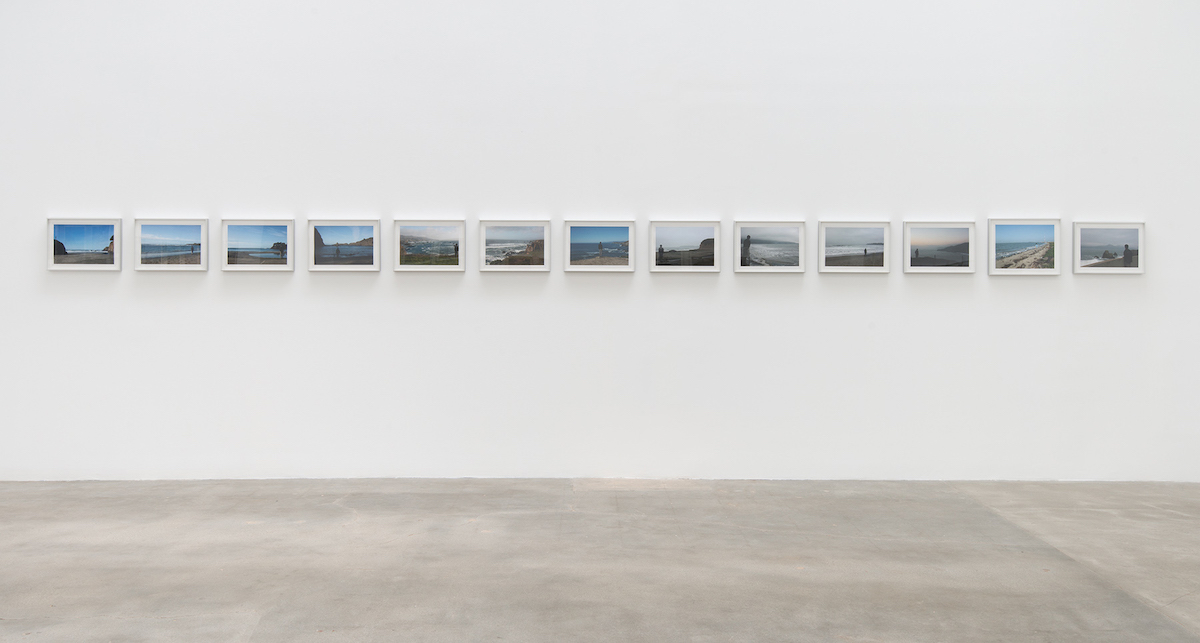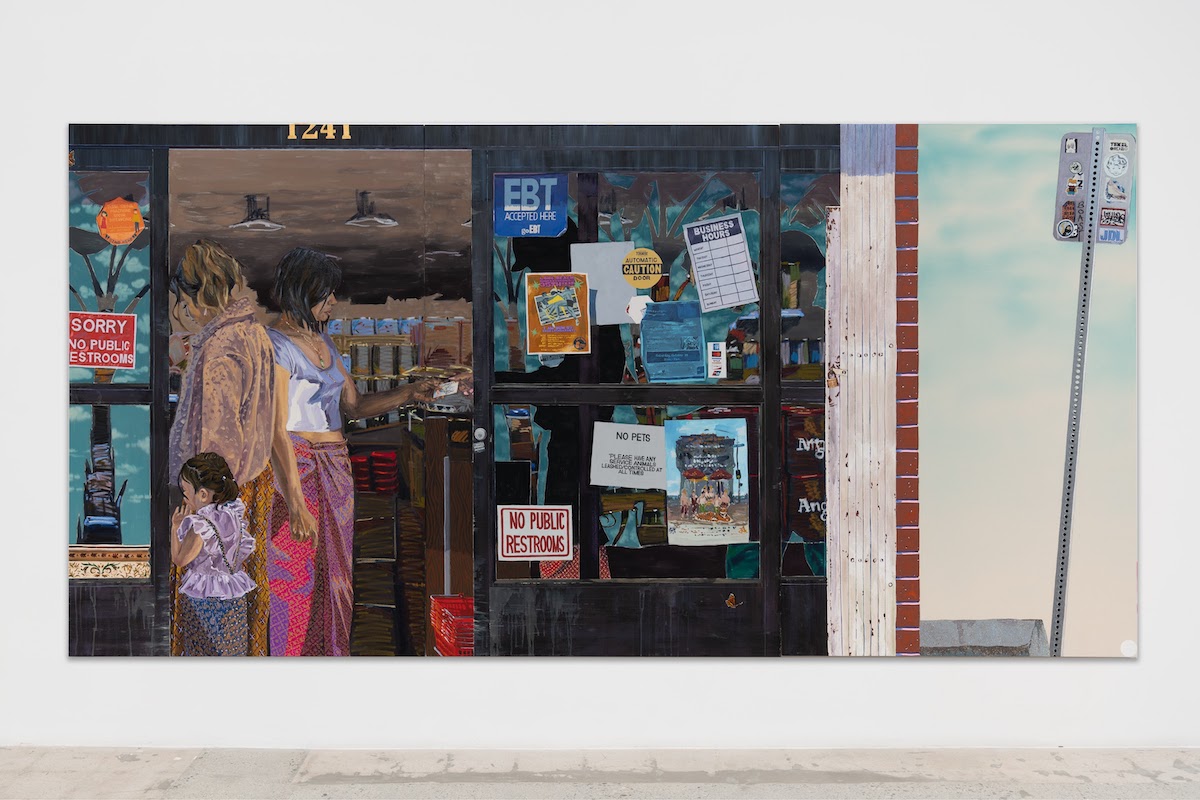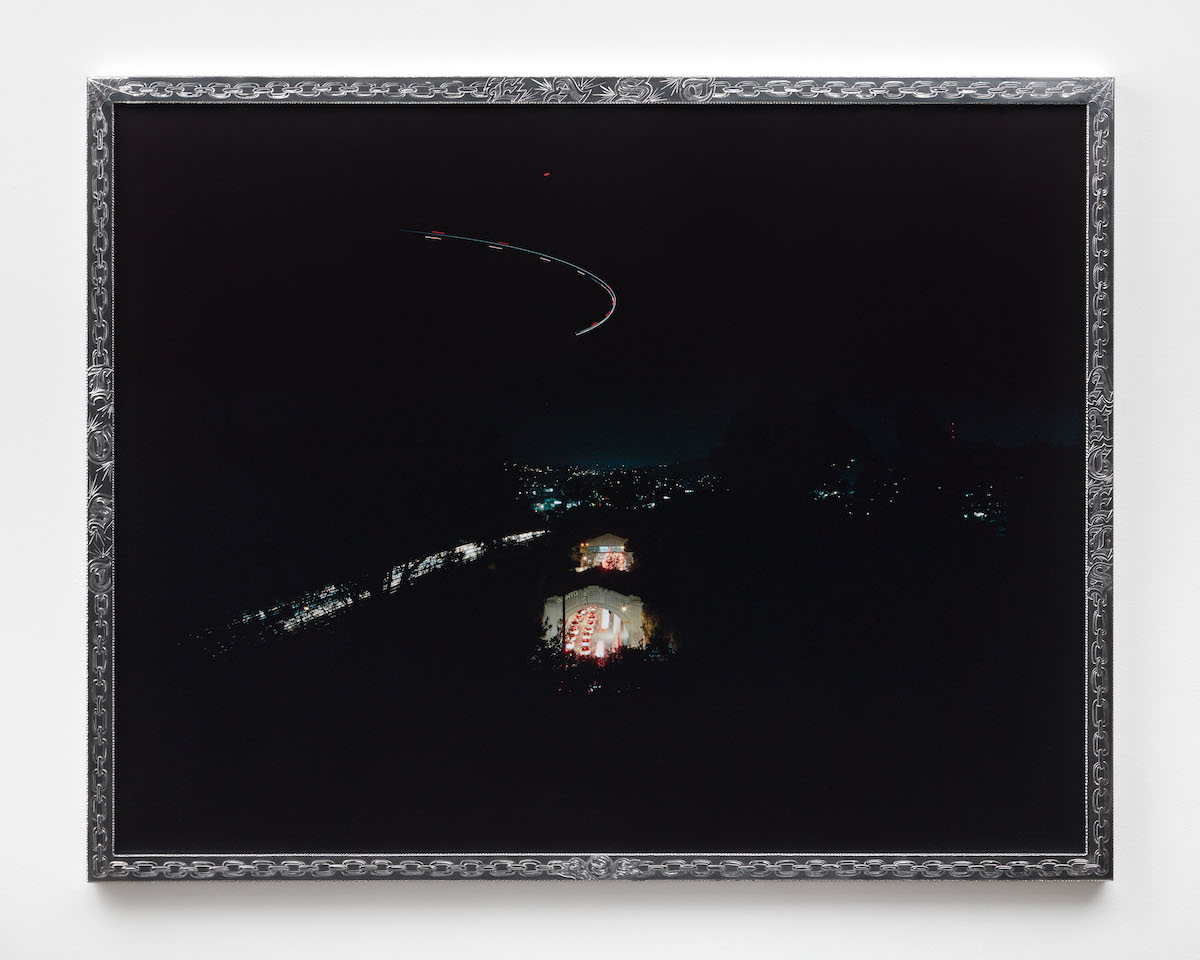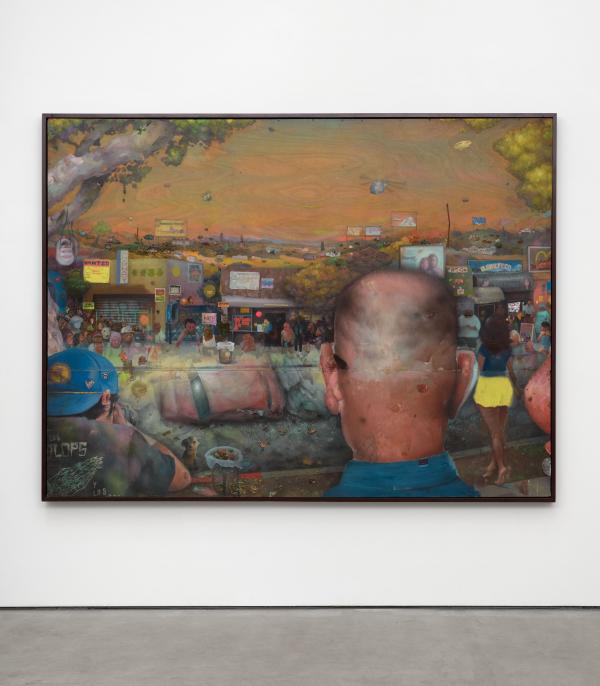We are pleased to announce the Art Here and Now (AHAN): Studio Forum artists of 2023: Michael Alvarez, David Horvitz, Tidawhitney Lek, and Guadalupe Rosales.
AHAN: Studio Forum was founded in the 1960s as a group of LACMA supporters with the focus on acquiring work by emerging and mid-career Los Angeles–based artists. Each year the curators of the Contemporary Art department organize a series of private studio visits with the AHAN members. They reconvene at a later date for a discussion that leads to a final selection of artworks. Below, read about each of this year’s AHAN artists, their practices, and the works that will be acquired.
Michael Alvarez
Born and raised in Los Angeles, Michael Alvarez creates paintings that are an incisive exploration of public spaces in the city. Plazas, freeway underpasses, and skateboard parks are featured in large-format paintings infused by the artist with theatrical grandeur. Playing with oddities of urban life and spectacle, Alvarez’s Neighborhood Watch is a depiction of a car crash and the crowds that gather to watch and document the event. The site is based on an interchange in El Sereno, a predominantly Latine part of Los Angeles, at the busy junction of Huntington Drive and Eastern Avenue. Two men, both based on friends of Alvarez, shown from behind, witness the car crash, as one documents it with a still camera. The painting is a collision of the event itself as well as the myriad graphic and architectural components that constitute this chaotic site.
Using oil paint (slow-dry pigments allow for multiple adjustments) and spray paint (canned paint produces brushed and fast marks), Alvarez's works conjure several tempos and ways of inhabiting the city. In Neighborhood Watch, as in other of his layered paintings, the artist collages gunk and debris he collected from his studio floor—as well as materials that he collects from the street—onto the canvas. Dabs of paint and other layered materials, including bits of trash, are magically transformed into landscapes and figures.
Simultaneously personal and impersonal, Alvarez's works offer a unique and contradictory gaze examining the city landscape. His paintings rely on a wealth of memories and experiences of a native Angeleno, and at times include actual photographs taken of the site. Still, at the same time, their tentative and dreamy atmospheres suggest the eye of someone who just arrived and tries to make sense of the city's scale, light, darkness, or moods.
David Horvitz

David Horvitz meddles with systems of language, time, and networks to examine the distances between people, places, and time. His expansive body of work includes photographs, artist books, performances, the internet, mail art, sound, rubber stamps, gastronomy, and natural environments that circulate and operate independently of himself. A viewer is likely to encounter his works as active objects in non-traditional environments, such as the postal system, libraries, the airport lost-and-found services, or a hybrid public/private garden in Arlington Heights. By testing the possibilities of how to appropriate, undermine, or even erase distances, Horvitz deploys art as both an object of contemplation and as a systemic tool for affecting change on a personal scale.
Public Access is a series of 48 chromogenic print (C-print) photographs with corresponding documentation in the form of Wikipedia article printouts. Completed in two parts, Horvitz spent roughly two weeks in early 2011 driving the length of the United State’s West Coast stopping to take images at local beaches and scenic vantage points. With the image’s framing and his physical stance he makes reference to iconic romantic paintings, such as Caspar David Friedrich’s Wanderer Above the Sea of Fog (1818). The photographs were then uploaded to the Wikipedia entries for each location. The work’s title nods to the public nature of California’s beaches and public commons of digital information on a site such as Wikipedia.
Horvitz was subsequently banned by the Wikipedia community and his photos were either cropped or deleted entirely. As Horvitz did not break any of the rules for use of the site, the ban was an indication of the controlling nature of Wikipedia’s supposed open community. This ban parallels how private homeownership in particularly wealthy coastal communities attempt to block access to public beaches. The conversations around Horvitz’s Wikipedia ban were made into an artist book by the same title.
Tidawhitney Lek

Tidawhitney Lek was born and raised in Long Beach, California, where many Cambodian families, including her own, settled during the 1980s to escape the violent regime of the Khmer Rouge. Lek’s experience as the sixth of seven children growing up in a Cambodian-American household strongly informs her paintings, which often feature themes of home, domesticity, and the multiple roles and identities that children of immigrants are expected to occupy while working through or against the legacy of generational trauma.
Lek’s narrative acrylic, oil, and pastel paintings are often imbued with specific references to place and community. Local Market features as its subjects two women and a child at the checkout counter of a supermarket, as seen through the storefront facade. A member of the Cambodian community in Long Beach might recognize the storefront as that of Dong Mai Supermarket at 1241 East Anaheim Street. Likewise, Southern California viewers may recognize one of the stickers on the parking sign, such as the Gerber baby–like face drawing of local street artist Nicky Nailed It. Lek acknowledges the coexistent communities that individuals exist in and that while it would be foolish to expect someone of a different background to truly understand her communities, narrative offers an invitation for conversation and cultural healing.
Guadalupe Rosales

Guadalupe Rosales is a multidisciplinary artist and educator committed to depicting her home, East Los Angeles, and Latine communities in Southern California. Rosales often uses photography to examine how archives are compiled and framed. She thinks of archives as immersive and sensorial spaces which have the power to activate memory and collective experience. She is well known for her community-generated projects Veteranas and Rucas and Map Pointz, which she began on social media in 2015. Rosales solicits submissions from her community and posts images on Instagram, creating an ongoing visual narrative. Rosales aims to celebrate and honestly portray Latin@/x culture. In 2017, Rosales was LACMA’s first Instagram artist in residence, taking over its social media account for six weeks.
In A night to remember, Rosales extends her interest in photography to preserve and transform memory. She took the night scene depicting one of the Figueroa Street Tunnels connecting downtown Los Angeles to Elysian Park and Highland Park. The work derives from a larger body of nocturnes. Rosales enjoys photographing the city in the middle of the night when it is quiet and peaceful. She often returns to places of personal significance, where she cherished moments with friends, or where she lost family members to violence. Rosales created a custom frame for the work—a stunning drawing chiseled into a metal frame that reads “Los Angels” in a gothic typeface, conjuring lowrider car graphics.



